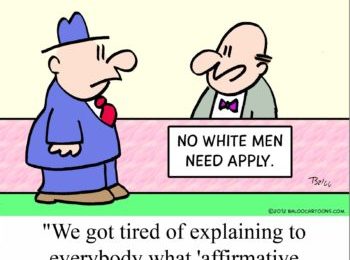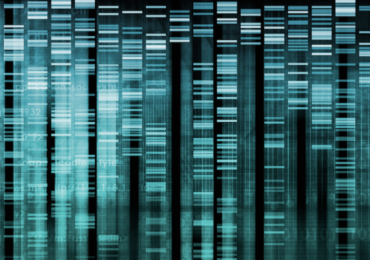By Dr. Patrick Slattery — Over the past year the “Black Livcs Matter” movement has taken to the streets after numerous cases of blacks dying at the hands of police or while in police custody. The movement (which has received so much money from the likes of George Soros that it can hardly be thought of as a movement in the sense of an organic, grass roots swelling of people) simplifies all these cases into police brutality against black victims, regardless of whether the deceased may have been involved in violent criminal activity or any other mitigating factors.
While there are no doubt problems with policing, some of which are particular to the black community, the police themselves face a particularly challenging situation in the black community. Nothing could better illustrate this point that the fact that as police forces are pushed by Black Lives Matter and their allies into a more hands-off approach, the black murder rate is skyrocketing.
This would seem to indicate that the work of the police, imperfect as it may be, has actually played an important role in reducing murder and violent crime in the black community.
Below are two articles. The first is from the Baltimore Sun and illustrates the lawlessness that has arisen in the wake of the riots in that city earlier this year. The second is from the BBC, which demonstrates that a “Ferguson effect” has spread across inner cities across the country.
While Black Lives Matter is not the only group involved in the protests, they have been able to hijack leadership and become the visible face of the black community. Evidence that it is not an organic black movement can be found on the “About Us” section of its website, which criticizes the traditional black leadership for “keeping straight cis Black men in the front of the movement.” (“Cis,” by the way, is the new term for men and women, whether straight or gay, who are not “trans-gender.”) It claims that “Black Lives Matter affirms the lives of Black queer and trans folks, disabled folks, black-undocumented folks, folks with records, women and all Black lives along the gender spectrum.”
Promotion of homosexuality, trans-genderism, and illegal immigration have never been priorities for blacks, but certainly are at the top of the Jewish supremacist social agenda for goys.
So what you have here is that an organization backed by Jewish extremists like George Soros has incited the black community into an anti-police frenzy, with the result that black murder rate has skyrocketed. The fact is that Black Lives Matter is willing to sacrifices the lives of a hundred times as many blacks as who may die at police hands in order to advance the Jewish supremacist agenda. Thanks, George Soros!
A man found dead with a bullet wound Wednesday in a vacant rowhouse near the CVS pharmacy that burned during the city’s April unrest brought Baltimore’s homicide count this year to 211 — matching the total from all of last year.
“Oh, Lord Jesus, there is always something going on around here,” Karen Hughes, 56, said as she walked past the vacant homes in the 1500 block of Traction St., where a crime-scene technician was cleaning up. “They really need to tear [the houses] down, because there are people who use drugs always going in and out.”
Police did not release the victim’s name, offer a motive for the killing or say whether they believe the man was shot in the home where his body was found. A police spokesman said all of the circumstances surrounding the incident remained under investigation.
Hughes, who has lived in the Penn North neighborhood of West Baltimore for three years, said she is tired of the crime and chaos.
During the riots in April, she said, she “stayed in the house the whole time” and now is “really trying to get out” of the area altogether.
“There is too much going on around here,” she said.
City officials and police agreed, saying there is too much crime across the city — too many robberies, too many shootings, too many young lives cut short — and not enough community support to stem the tide of violence.
“We made so much progress in the city,” said City Councilman Brandon Scott, vice chairman of the council’s public safety committee. “To have all of that washed away and be back to the years we had utter chaos and utter disarray, it is something I never wanted to see again.
“If you remember what it was like in the 1990s, you should be waking up with it on your mind and have a feeling in your gut,” he said. “I don’t want to be having this same old conversation. It is not just a police thing, it’s not just the citizens’ responsibility — it’s everyone’s responsibility.”
The homicide count puts the city on pace for a return to levels of the 1990s, the last time the city recorded more than 300 killings in a single year.
“It’s too many mothers that are losing mainly sons,” said Lt. T.J. Smith, the Police Department’s chief spokesman. “We have an obligation to the community to work as hard as we can to drive down the crime.”
Smith said officers are working hard on patrol. He cited the officers who heard gunshots in North Baltimore last week and responded quickly to what ended up being a triple homicide, and the recent handgun charge against a 24-year-old man who police say ran from officers and discarded a weapon.
The department announced arrests in the fatal shooting July 24 of 39-year-old Damon Ramsey in the 2300 block of Harford Road and in a nonfatal shooting July 25 in the 2300 block of Wilkens Ave.
Smith said more progress is expected, but recent crime-fighting initiatives — such as the “war room,” where city officers and detectives work side-by-side with federal agents — will take time to show results.
“We all want instant gratification,” he said. “It’s unfortunate that some of these plans take time.”
Mayor Stephanie Rawlings-Blake said arrests are increasing in Baltimore, a positive move against the summer’s “domino effect” of crime that shows the new partnership between city police and federal law enforcement officials is working.
“These are known entities who are battling it out in the streets like this is the wild, wild West,” she said. She blamed much of the recent violence on retaliatory attacks.
“When you have one shooting or homicide and then you have the group that was impacted, they retaliate and then this group retaliates,” she said. “That’s what we’re seeing going back and forth.
“We can trace it, we can trace the players, and those are the individuals that we’re focused on. History tells us that the dominoes will continue to fall. We will continue to see the loss of life in our streets until we can extract these individuals off the street.”
Rawlings-Blake said the city turned a corner about 31/2 weeks ago as drug arrests and gun seizures began to rise. She didn’t provide numbers but called the arrests “positive indicators that officers are engaged on every level and that things are turning around.”
Violence spiked after the death in April of Freddie Gray. The 25-year-old Baltimore man suffered a severe spinal cord injury in police custody.
On the day of his funeral, the city erupted in rioting, looting and arson — including the burning of the CVS at Pennsylvania and North avenues.
Baltimore State’s Attorney Marilyn J. Mosby charged six officers involved in Gray’s arrest with charges that included misconduct in office and second-degree murder.
The union that represents rank-and-file officers said those charges made officers hesitant to do their jobs. Police made an average of 2,630 arrests per month between January and April, but arrests plummeted to 1,557 in May.
In June there were 2,095 arrests, and in July there were 2,498, city data show. Still, arrest numbers in 2015 remain well below those in past years — and homicide and robbery clearance rates are far below the average of recent years.
The average number of arrests per month this year is 2,381, compared to 3,281 last year and 3,517 in 2013, according to city data.
City officials have sought to renew alternative crime-fighting initiatives that have faltered in recent months.
They announced that the Safe Streets program would be expanded, even as the status of an East Baltimore unit remains in question after two employees were arrested and drugs and guns were found in the office.
Rawlings-Blake also removed the director of CitiStat, Mark H. Grimes, after the agency lost data analysis staff and failed to publish department reports.
On Wednesday, Maryland Division of Parole and Probation Director Judith Sachwald and Executive Deputy Director Joseph Clocker were knocking on the doors of recent parolees to inform them of a meeting next week under the city’s troubled Ceasefire program.
At the meeting, officials plan to advise parolees of services to help keep them out of trouble.
They will be urged to “stay strong,” Sachwald said, “saying ‘No’ to the things you need to say ‘No’ to, and ‘Yes’ to the things that help you stabilize your life.”
The Wednesday morning homicide on Traction Street followed two killings in the city on Tuesday night. A 28-year-old man was shot and killed just before 9 p.m. in the 2200 block of Ashton St., police said.
Officers called to the 200 block of N. Conkling St. shortly before 8 p.m. found a 21-year-old man with multiple gunshot wounds, police said.
Police also reported a nonfatal shooting at 9:15 p.m. Tuesday in the 3500 block of Old York Road in North Baltimore — a 23-year old man was shot in the buttocks, they said — and a double shooting early Wednesday morning in the 200 block of Whitridge Ave. in which a 16-year-old boy was shot in the thigh and a 25-year-old man was shot in the hand.
Why has the murder rate in some US cities suddenly spiked?
-
5 June 2015
Murder and violent crime rates have risen in multiple US cities since the beginning of 2015, after falling for two decades. Some have put this down to a so-called Ferguson effect, referring to the protests against perceived police brutality, that sometimes became violent. Could that be true?
What do the statistics say?
There are no national figures on crime in the US available yet for 2015, but some cities have released their own figures.
In New York City, the murder rate has gone up by 20% in 2015 compared with the first few months of 2014. Mayor Bill de Blasio called a special news conference at which he acknowledged the increase, but said it could be contained. He said he had faith in the New York Police Department that they will “turn the tide”.
In other cities, there are similar increases reported. In Baltimore, murders are up 37% and in Los Angeles, violent crime is up by 27% (although murders are down 2%). In Houston, murders are up nearly 50% so far this year.
What is the Ferguson effect?
This is a term coined by St Louis Police Chief Sam Dotson, whose police officers had been one of the forces dealing with the summer protests and riots in Ferguson, Missouri, following the fatal shooting of black teenager Michael Brown.
He said in November his police officers had been drawing back from everyday enforcement due to fears they could be charged. As a result, he said, the “criminal element is feeling empowered”.
The phrase was repeated recently by Heather MacDonald, a fellow at the US Manhattan Institute, in a piece for the Wall Street Journal.
The Ferguson effect, she said, was taking hold across the country “under the onslaught of anti-cop rhetoric”.
Multiple police officers Ms MacDonald spoke to told her police morale is at an all-time low and they are now worried about being charged, recorded and assaulted while trying to do their jobs and keep communities safe.
“Unless the demonisation of law enforcement ends, the liberating gains in urban safety will be lost,” she wrote.
Baltimore’s police boss, Anthony Batts, said the riots had another effect on crime. Scores of pharmacies had been looted and the surge in the supply of drugs has “thrown off the balance” between gangs in the city, he said.
“There’s enough narcotics on the streets of Baltimore to keep it intoxicated for a year,” he said.
What about other reasons?
The Ferguson effect is an unlikely reason, said Jeffery Ulmer, associate head of the Department of Sociology and Criminology at Penn State University in State College, Pennsylvania.
“Is it possible that somehow high-profile police shootings have angered some local populations and caused a rise in violent crime of all kinds in the last few months? Yes. Do I find that scenario likely nationwide? No, not at all.”
More likely, he said, is that local forces are at play.
Violent crime rates are often in response to major changes in policing, but are mostly driven by social factors such as the size of the youth population, the amount of socioeconomic disadvantage and social disorganisation in a given city.
Violent crime being up in NYC is related to the decrease in “stop and frisk”, said Alfred Blumstein, a criminologist at Carnegie Mellon University in Pittsburgh, Pennsylvania.
The New York City Police Department’s historical main tactic for stopping people has significantly decreased after the way it was exercised was deemed unconstitutional.
“Inevitably, there was a trade off,” said Mr Blumstein. “[Stop and Frisk] was certainly a deterrent effect to carrying a gun in the street.”
New York City’s historic drop in crime since the 1980s is “astonishing”, said Mr Blumstein, but continuing downward trends cannot go on forever.
Mayor de Blasio said summer was also to blame – last year saw an uptick in crime at the end of spring and beginning of summer for New York City as well. Researchers from the University of North Carolina found a correlation between higher temperatures and violent crime rates in a 2004 study.
Could the increase be just a blip?
Violent crime is not going up everywhere. Philadelphia has seen a 41% decrease in murders since 2007.
Short-term spikes are statistically unreliable, especially if they come after a long-term decline, and could just be a blip, said Dr James Alan Fox, a criminologist at Northeastern University in Boston.
“It’s a ridiculous silly game of focusing too much on too little, trying to ascribe it to something like the impact of [events in] Ferguson,” said Mr Fox. “None of these statistics are reliable.”
A wider window of statistics would be much more reliable than a handful of figures representing January to May of this year, he said.
That flattened feeling police officers are having in Baltimore? It will pass, Dr Fox said.
“I don’t want to minimise the tragedy of so many dying… but the sky is not falling,” he said.





